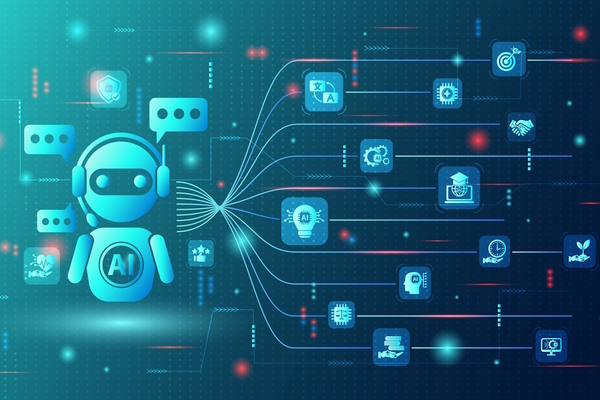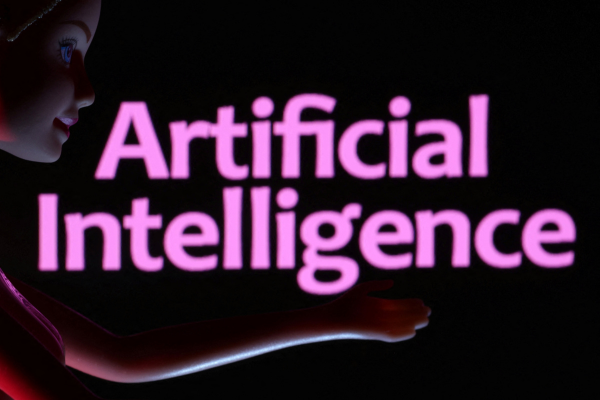The place of brands in AI’s digital punk revolution

Julius Colwyn at Space Doctors explains explain how brands can connect with their audiences in this time of revolution, without turning their backs on the benefits of AI
Artificial intelligence has stepped out from behind the curtain over recent years, with people increasingly rebelling against it – and businesses having to rethink how to connect with their audiences in this time of revolution.
AI is no longer just curating the experience of content, directing our attention, engineering virality. It is now making the content itself, trying to emulate what it thinks we want – and has therefore become much more visible. Text to voice Reddit post mashups, ASMR montages, all overlaid in hyper saturated TikTok formats.
AI is perfectly tuned to exploit our dopamine systems, self-engineered to maximise our engagement and streamline our viewing habits.
Fighting mediocrity
The result is content that’s automated and homogenised – and people are getting bored with it. They are starting to get a feel for the cold, mediocre consistency of AI’s outputs.
Culture has always resisted being flattened in this way. Content is part of cultural capital, how we identify and express ourselves and what we like and dislike. We want to express our own unique intersection of tastes, just as much as we want to be ‘part of a trend’. So when creativity becomes automated, it erodes the value of that capital.
Supply, plus demand, equals value. With the internet being flooded with empty, artificial content that requires no human effort to create, how can that content still be valuable? How can we use it to communicate our own tastes without coming across as mediocre?
‘The algorithm’ is setting a new standard, but perhaps not the standard everyone expected. It is more a measure of fidelity (we can create high quality easier) than it is a measure of creativity. Without creative humans collaborating, challenging, experimenting and testing with AI, all you get is ‘GIGO’: garbage in, garbage out, or in this case, ‘MIMO’ (mediocrity in, mediocrity out).
Over the past year, we have seen increasing pushback – a digital punk revolution, if you like. Brat Summer was arguably the most visible expression of this, subverting the expectations of modern design with its unpolished grit and Web 1.0 aesthetic. But there have been plenty others. For example, musicians such as Mac DeMarco and King Krule are embracing low fidelity recording techniques. Embracing tape hiss, intentional imperfections and all, they create a sound that’s distinctly human and difficult for AI to emulate convincingly.
Or take counter-intuitive content association across social media. The ‘very demure, very mindful’ trend, for example, is deliberately mocking the viral. In publicising this mindset and making statements on very public forums such as TikTok, creators show the opposite of ‘demure’, confusing the AI and playing games with literal meaning.
The do’s and don’ts
For your business or brand to stand out among this shift, to be distinctive, to create a connection that resonates, you need to recognise AI’s limitations. Don’t let it determine your creative strategy, for example. While generative AI is novel now, people are already building an intuition around it, sensing very quickly the perfection of an AI image, and rejecting it as a result.
Also, don’t rely on AI’s predictions of cultural trends. Artificial intelligence is always retrospective, it can only ever tell you about what is happening in the rear-view mirror. Cultural trends are now deliberately jack-knifing and self-reflexively or ironically glitching their own meaning, So the chance of making a mistake is much higher without the nuanced human interpretation of the meaning behind a trend.
Most importantly, don’t take AI’s explanation for human motivations. It doesn’t understand us, and we insult our customers when we design to a synthetic average of what AI thinks they want and need. Our motivations take shape in culture, so we need to keep our focus there to be authentic to shared human experience.
For elements of business management and automation, AI definitely has a role. Even within creative it can serve as an exciting new tool. But it is human creativity that shapes the inspirational futures people want to see, and it is cultural meaning (rather the algorithmic curation) that defines the edges of what we can imagine.
Championing human creativity
Brands’ main role in the era of AI, therefore, isn’t to be the creator, but to enable, elevate and champion human creativity. Handmade products, counter-intuitive meanings, organic creativity, spontaneous reactions, live creation – these are the ways in which you can nurture meaningful connection with your customers.
If you trust AI with the future of your brand, you radically constrain and dull your possible futures. You risk losing your distinctive edge and becoming part of a feedback loop. Defining what your brand could be, by what AI thinks your brand is, based upon the data of what your brand was. It’s a dead end. With no connection to the rapidly changing values and aspirations beyond the algorithm.
As AI causes a rapid inflation in the information and attention economy, keep innovating beyond the algorithm. And create meaningful futures with human creativity and experience at their heart.
Julius Colwyn is a Director at Space Doctors
Main image courtesy of iStockPhoto.com and MicroStockHub

Business Reporter Team
Most Viewed
Winston House, 3rd Floor, Units 306-309, 2-4 Dollis Park, London, N3 1HF
23-29 Hendon Lane, London, N3 1RT
020 8349 4363
© 2025, Lyonsdown Limited. Business Reporter® is a registered trademark of Lyonsdown Ltd. VAT registration number: 830519543





